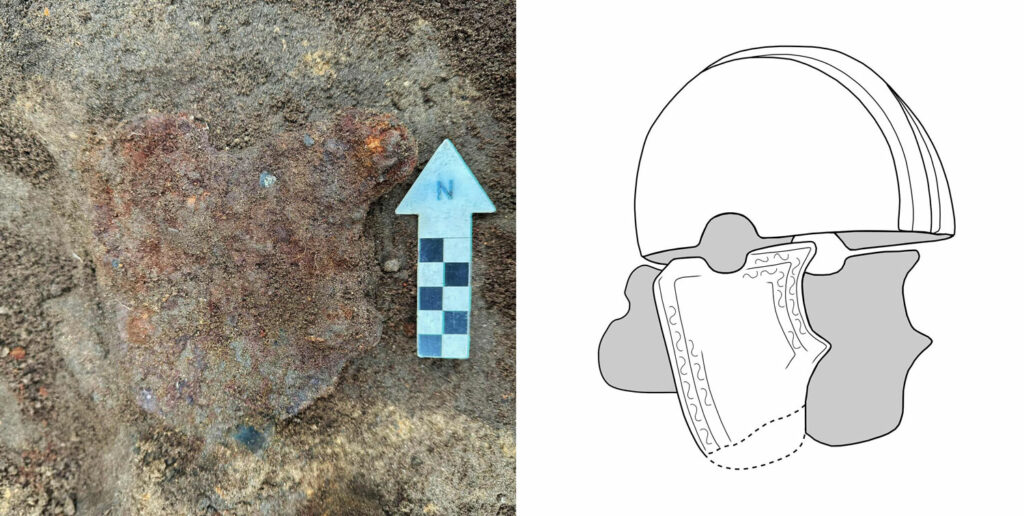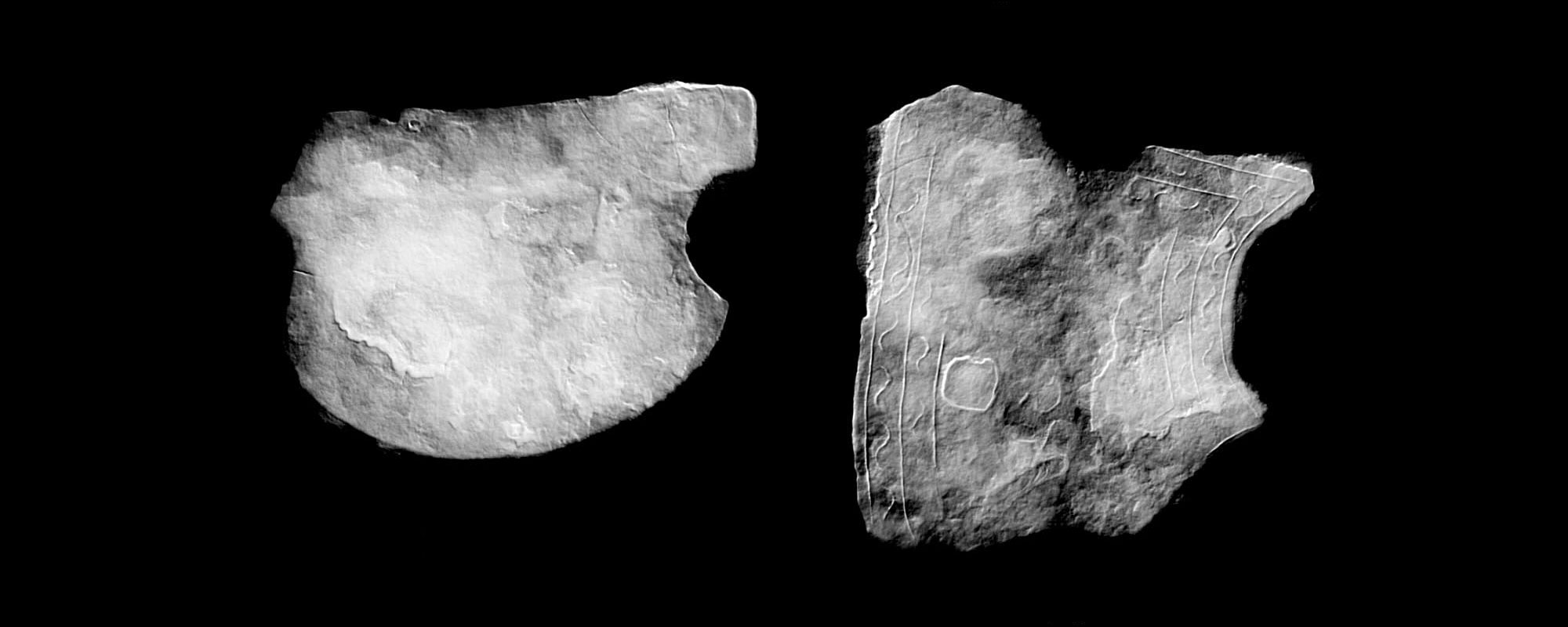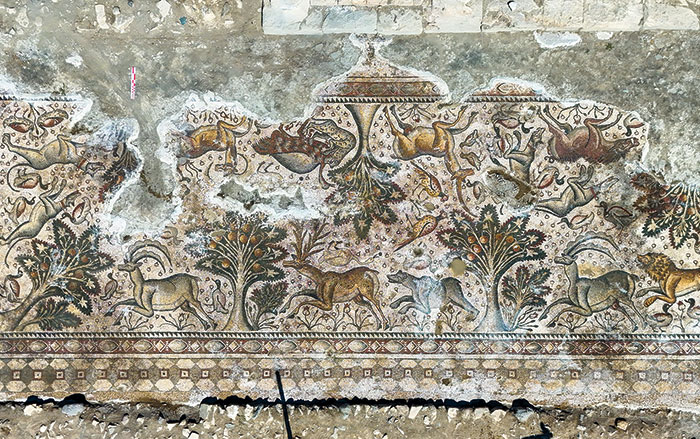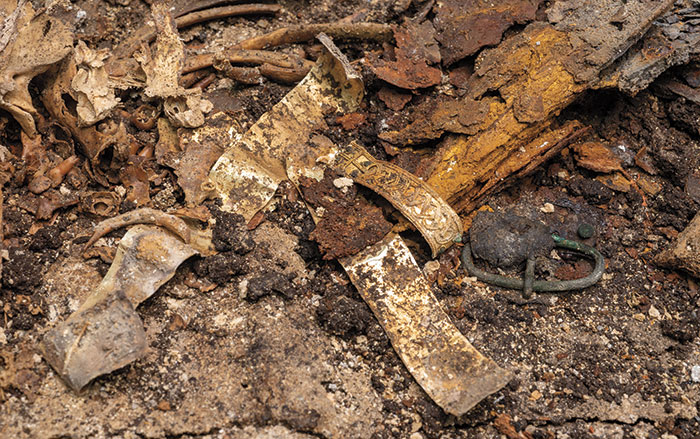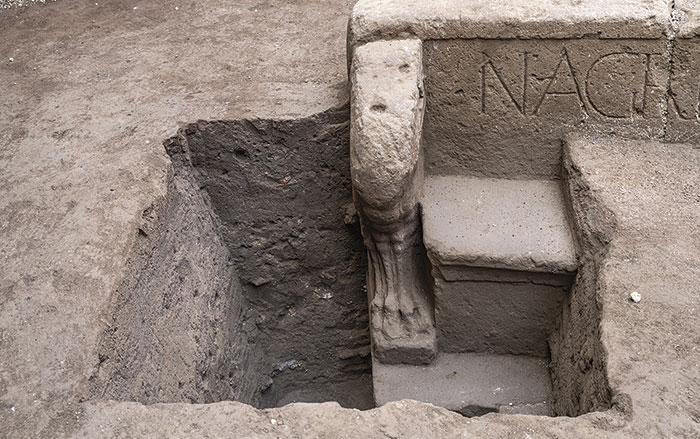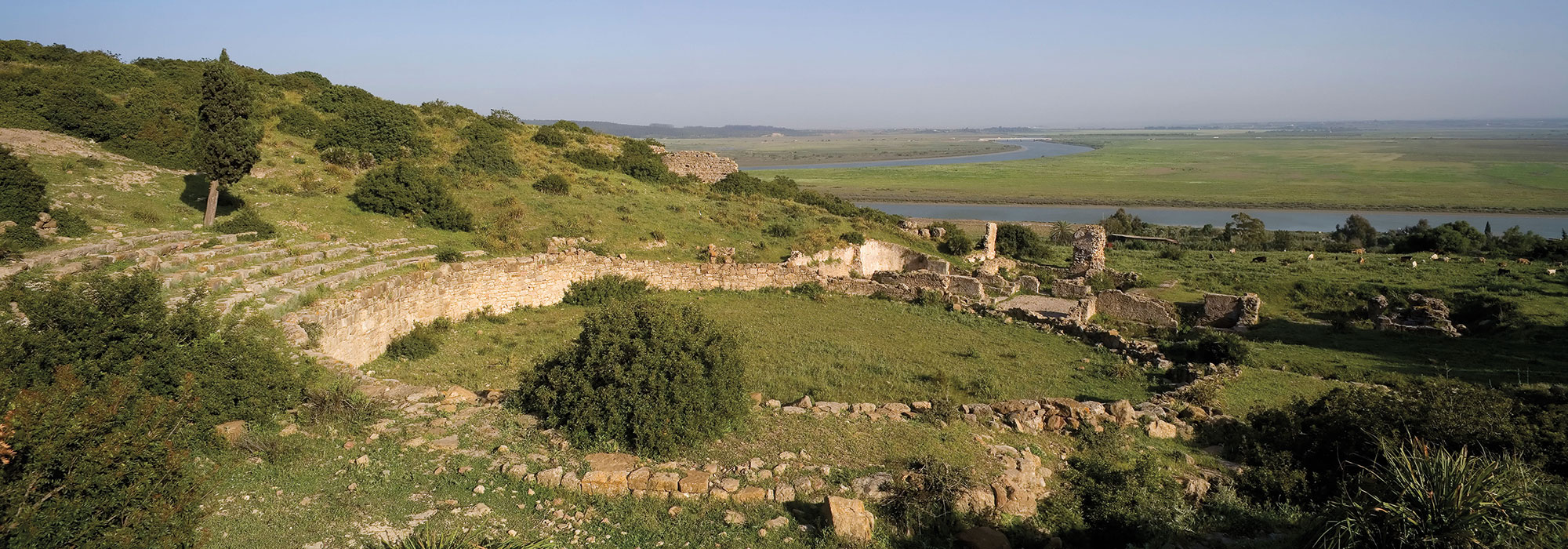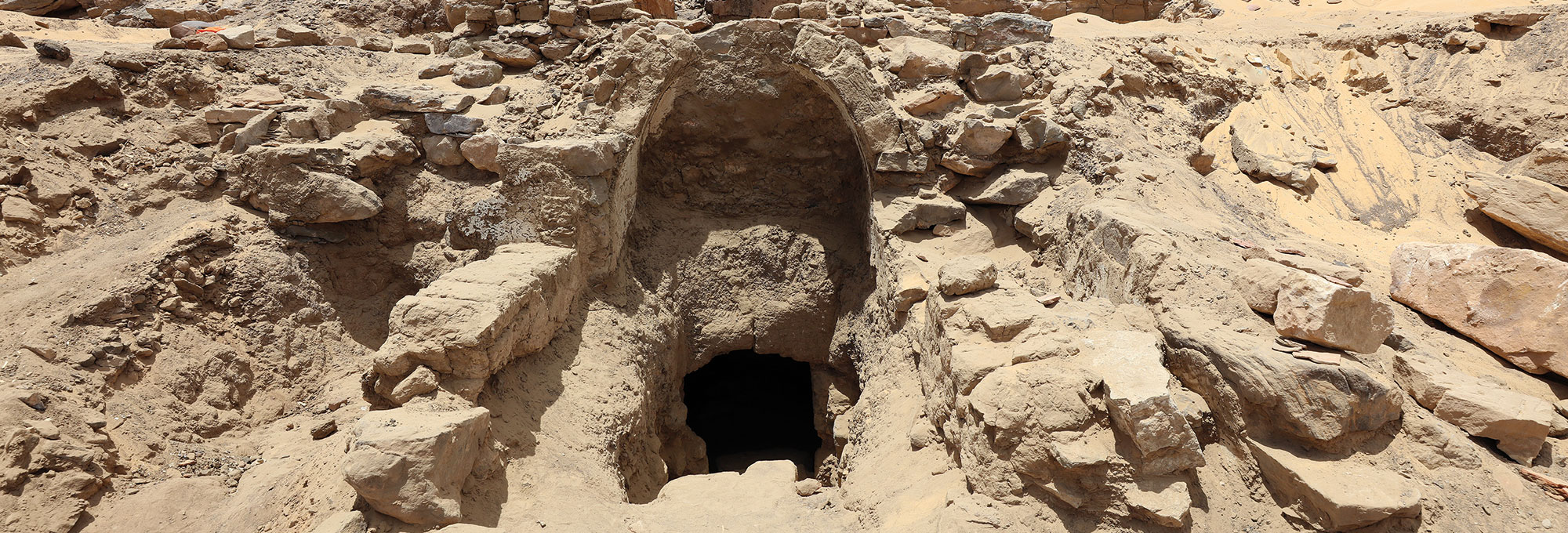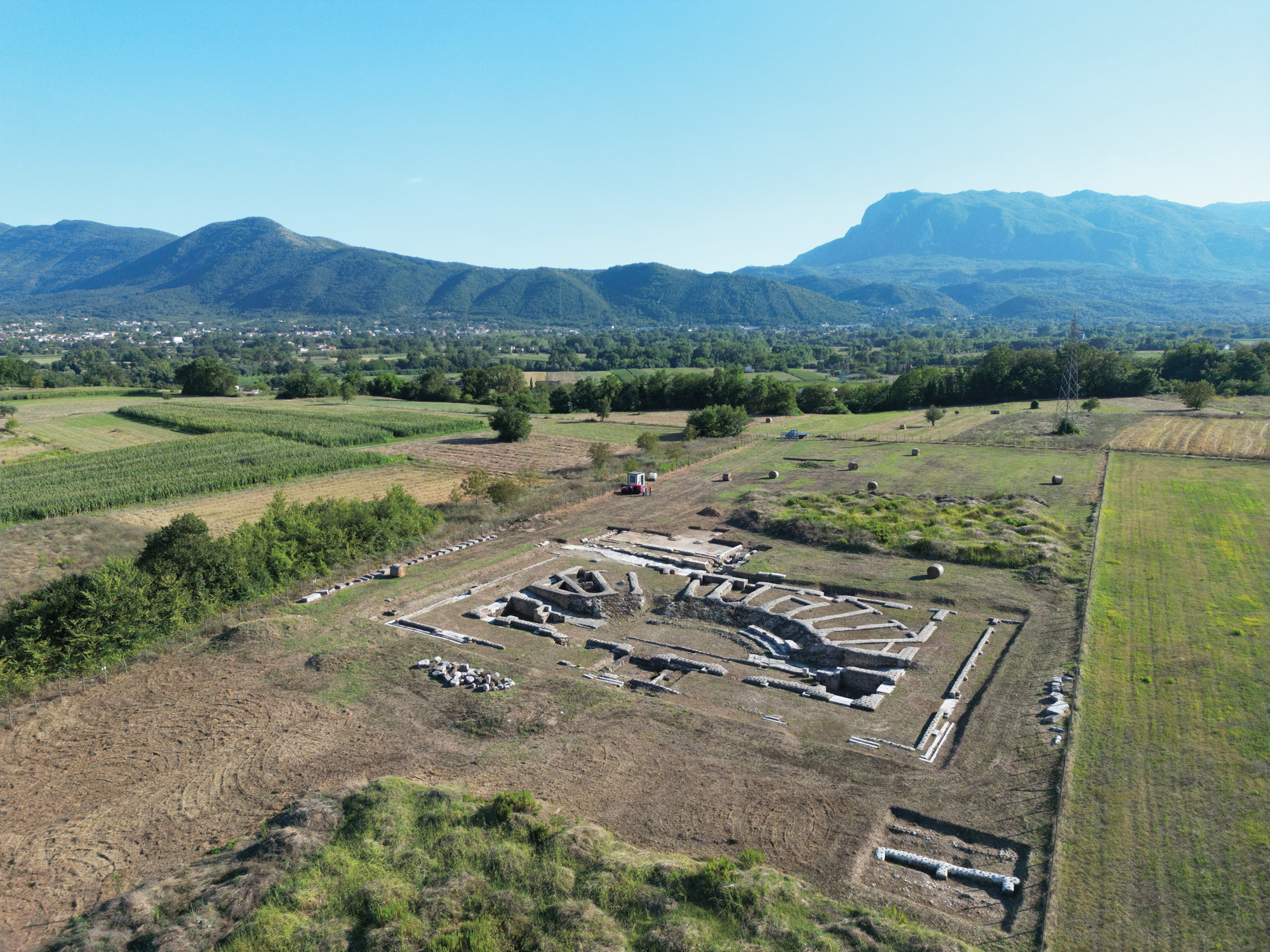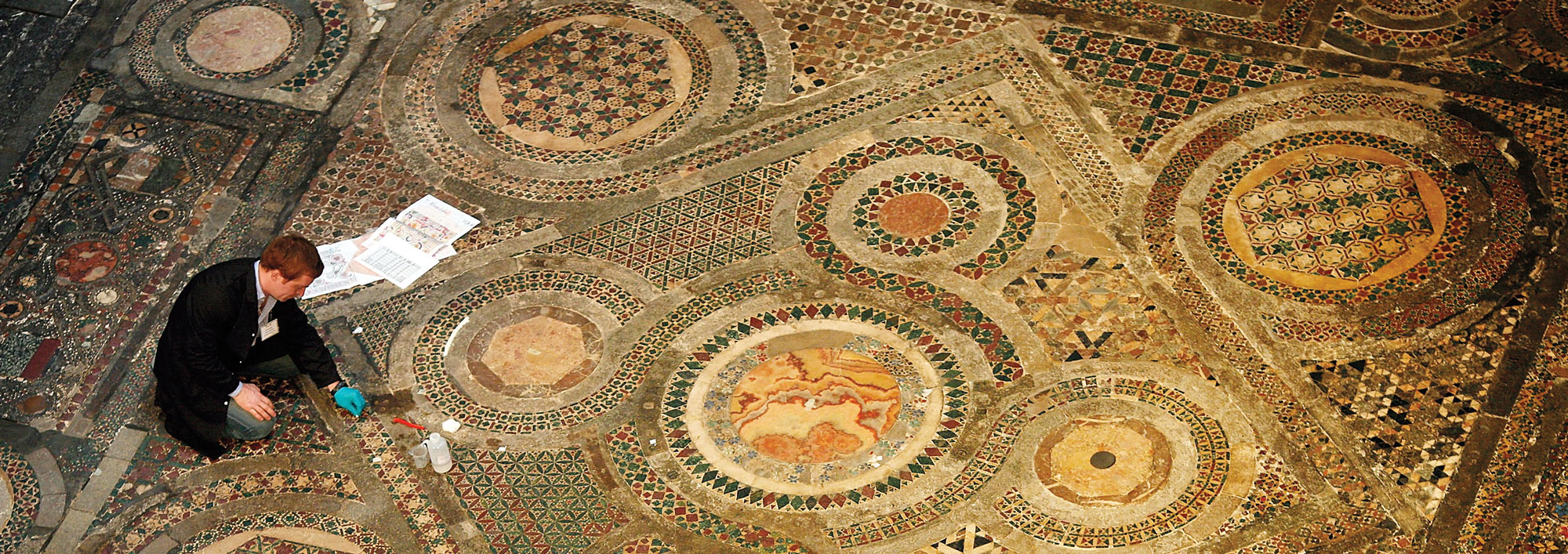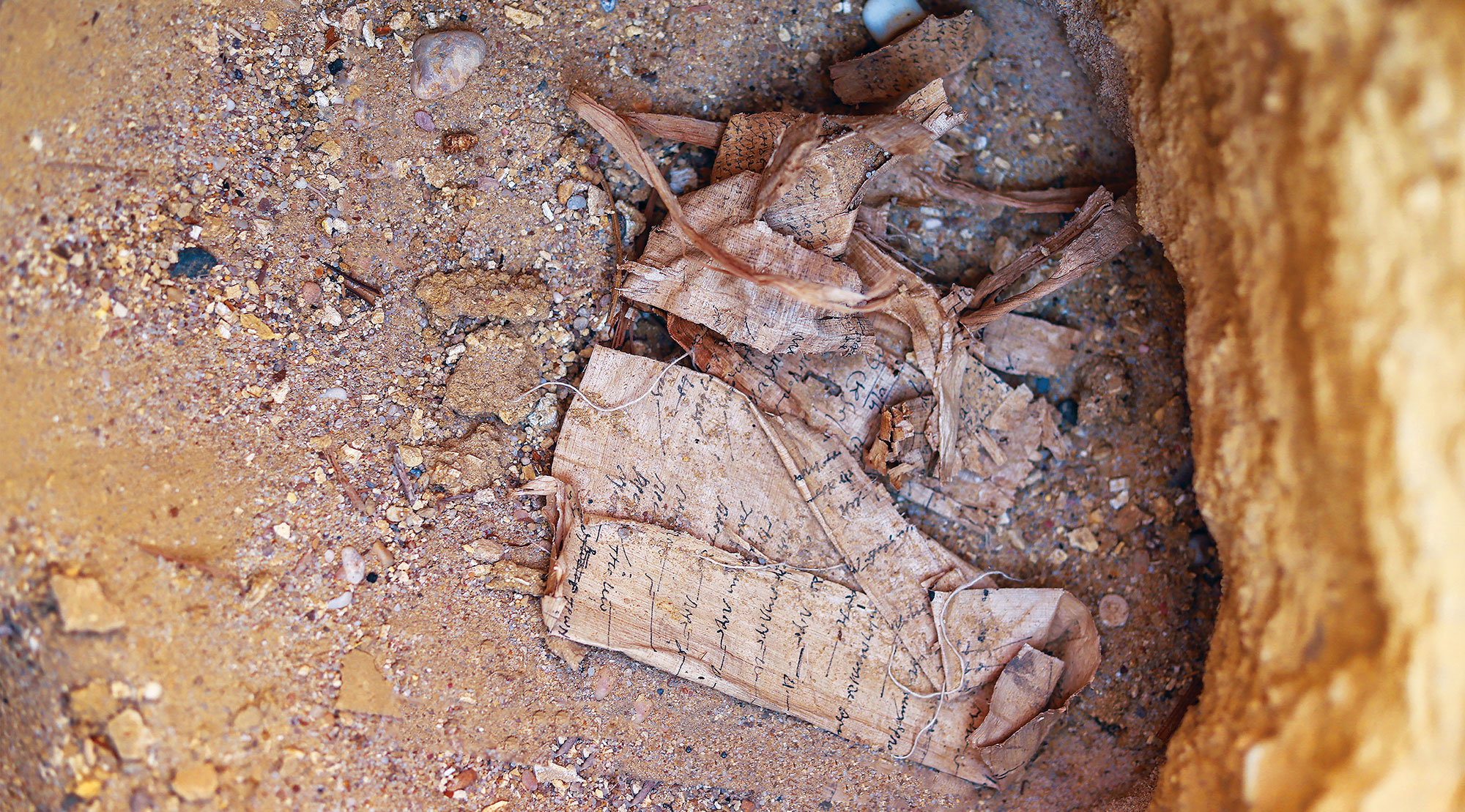HEDENSTED, DENMARK—Researchers have identified fragments of a Roman helmet dated to the fourth century A.D. among more than 100 weapons that were unearthed in Denmark last year at the site of an Iron Age settlement known as Løsning Søndermark, according to a Sci News report. The cheek and neck pieces of the helmet, as well as swords, spearheads, lances, and chainmail, are thought to have been placed in the postholes of two houses as a ritual offering. “Roman helmet finds from the Iron Age are exceptionally rare in southern Scandinavia, and there are no direct parallels to this discovery,” said archaeologist Elias Witte Thomasen of the Vejle Museums. The offering may have been made after a battle, and may be linked to the construction or destruction of the two houses where they were found. Two bronze neck rings were also recovered, which suggests that the items belonged to a chieftain or members of a warrior elite. “The helmet may have belonged to a Germanic warlord who served in the Roman auxiliaries, bringing his personal equipment home after his service ended,” Thomasen explained. “The missing cheek plate and helmet bowl were likely distributed elsewhere,” he concluded, unless the helmet pieces had been taken from a Roman legionary during battle. To read about X-ray analysis of a medieval helmet uncovered in northeastern England, go to "An Enduring Design."
